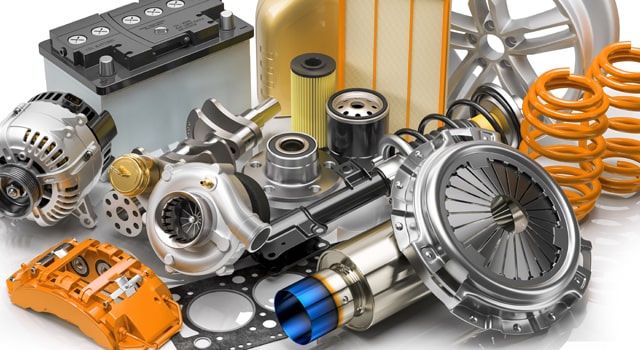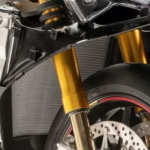In a world where sustainability meets creativity, the line between functionality and art is constantly being redrawn. Nowhere is this more evident than in the burgeoning trend of transforming car parts into striking pieces of furniture. Gearheads, artists, and interior designers are collaborating to upcycle vintage car components into one-of-a-kind tables, chairs, lighting fixtures, and home decor. From a piston-legged coffee table to a striking vintage engine block table, these pieces aren’t just conversation starters—they’re statements of innovation and appreciation for automotive history.
The Rise of Automotive Upcycling
The journey from scrapyard to showroom has gained momentum thanks to the growing emphasis on environmental consciousness and the desire for bespoke, personalized interiors. Rather than letting retired vehicles rot in junkyards, enthusiasts are breathing new life into old car parts by repurposing them into furniture that blends industrial ruggedness with artistic elegance.
Upcycling auto parts is not only environmentally responsible but also emotionally evocative. For many, cars are more than machines—they’re memories, milestones, and masterpieces. By reusing parts like gearboxes, crankshafts, and wheels, creators preserve a slice of history while giving it a bold new purpose.
The Allure of the Vintage Engine Block Table
Perhaps no item embodies this movement better than the vintage engine block table. These stunning centerpieces transform the heart of a vehicle—the engine—into the heart of a living space. Featuring raw metal, intricate engineering, and often a glass top that reveals the beauty beneath, a vintage engine block table merges mechanical heritage with modern design.
These tables are particularly popular among collectors and auto enthusiasts who want to pay homage to classic engines from marques like Ferrari, Jaguar, Porsche, and Mustang. The worn but robust engine blocks become both a functional table base and a sculptural form that reflects decades of automotive ingenuity.
Designers typically clean, sandblast, and sometimes polish or paint the engine blocks, preserving their rugged aesthetic while ensuring safety and stability. Adding LED lighting or encasing them in resin can create an even more dramatic effect.
Iconic Car Parts Reimagined
Beyond engine blocks, numerous car components are being reimagined in the world of interior design. Here are a few standout transformations:
1. Piston Stools and Chairs
Pistons, once crucial to combustion, are now providing sturdy support as legs for stools or frames for custom chairs. Their cylindrical symmetry and industrial finish make them ideal for modern, edgy interiors. Paired with reclaimed wood or leather seats, they offer a gritty yet refined touch.
2. Crankshaft Lamps
Crankshafts—once hidden beneath engine covers—are becoming the backbone of artistic lighting fixtures. Their spiraling shape and multiple bearings offer a unique frame for standing lamps or pendant lights. With a few Edison bulbs and some creative wiring, crankshafts turn into glowing towers of metallic beauty.
3. Steering Wheel Mirrors and Wall Art
Steering wheels and hubcaps are often transformed into stylish wall decor or mirrors. When mounted with flair, these items become nostalgic centerpieces that celebrate classic car design while adding character to any room.
4. Tire Tables
Recycled tires have made their way into patios, lounges, and offices as circular coffee tables or ottomans. Adding a glass top and painted rim elevates the piece from grunge to gallery-worthy, especially when paired with other repurposed materials.
Blending Industrial and Contemporary Aesthetics
One of the main appeals of automotive furniture is its ability to fuse seamlessly with industrial or contemporary interiors. Exposed beams, brick walls, and minimalist layouts provide the perfect backdrop for furniture that boasts both mechanical grit and artistic craftsmanship.
Even in more eclectic or traditional homes, strategically incorporating a piece like a vintage engine block table can add a surprising and delightful twist—an intersection of function, form, and history.
Customization: Where Art Meets Personal Story
Perhaps the most profound aspect of car-part furniture is its customization potential. For those who’ve restored cars with loved ones, raced on weekends, or simply admired automotive engineering from afar, using salvaged parts becomes a deeply personal journey.
Some clients request that designers use specific models or years of engines from vehicles they once owned. Others commission pieces made from the remains of a car passed down through generations. In these cases, the resulting furniture transcends decor—it becomes a story preserved in metal and glass.
Spotlight on Artisans and Studios
All over the world, artisan workshops and independent designers are gaining recognition for their contributions to this niche. Studios like Fallen Industry in New York or Auto Furniture in the UK specialize in converting classic car parts into furniture pieces that range from subtle to spectacular.
One standout example includes a dining table built around a Lamborghini V12 engine block, repainted in high-gloss yellow with a thick tempered glass top. Another feature is a Chevrolet small-block V8 turned into a home office desk, complete with storage drawers made from transmission cases.
These craftspeople showcase technical expertise and pay homage to mechanical design by maintaining the authenticity and form of the original parts.
The Technical Side of Transformation
Turning car parts into furniture isn’t as simple as slapping a glass top on a piece of metal. It requires engineering knowledge, artistic vision, and precision craftsmanship. Parts need to be structurally sound, properly balanced, and treated for rust or sharp edges.
Designers often work with welders, machinists, and restoration experts to ensure safety and durability. Weight is another consideration; engine blocks are heavy, and incorporating them into homes requires strong flooring and thoughtful placement.
Glass used for tabletops must be tempered and secured properly to avoid tipping or cracking. In some designs, parts are stabilized with acrylic or hidden framework to enhance usability without compromising the visual impact.
Sustainability and Legacy
At its core, this design movement is about more than aesthetics—it’s about sustainability and preserving legacy. By upcycling parts that would otherwise be discarded, these designs reduce waste and minimize the carbon footprint associated with new furniture production.
Each piece, whether it’s a lamp, chair, or vintage engine block table, keeps metal out of landfills and gives materials a second, beautiful life. It also challenges traditional ideas of what furniture can or should be, encouraging us to see potential in the discarded and value in the obsolete.
How to Get Your Own Piece
If you’re intrigued and want to bring the power of a piston or the presence of a V8 into your home, there are a few options:
- Commission a Custom Piece: Reach out to a designer who specializes in automotive furniture. Share your ideas, favorite car models, or parts you already own.
- DIY Projects: For the mechanically inclined, repurposing car parts into furniture can be a rewarding weekend project. Just ensure you follow safety protocols.
- Online Marketplaces: Platforms like Etsy, eBay, and specialty retailers often have ready-made engine block tables, tire chairs, and more.
Final Thoughts
What once roared down highways now graces homes as bold, imaginative furniture. The transformation from engine to art is more than mechanical—it’s philosophical. It reflects a desire to repurpose, reimagine, and reconnect with history through craftsmanship.
Whether you’re an auto enthusiast, a design lover, or someone drawn to unique, sustainable home decor, the world of car-part furniture offers endless possibilities. The next time you see a rusty fender or abandoned gearbox, look closer—you might just be seeing the bones of your next favorite piece of furniture.






